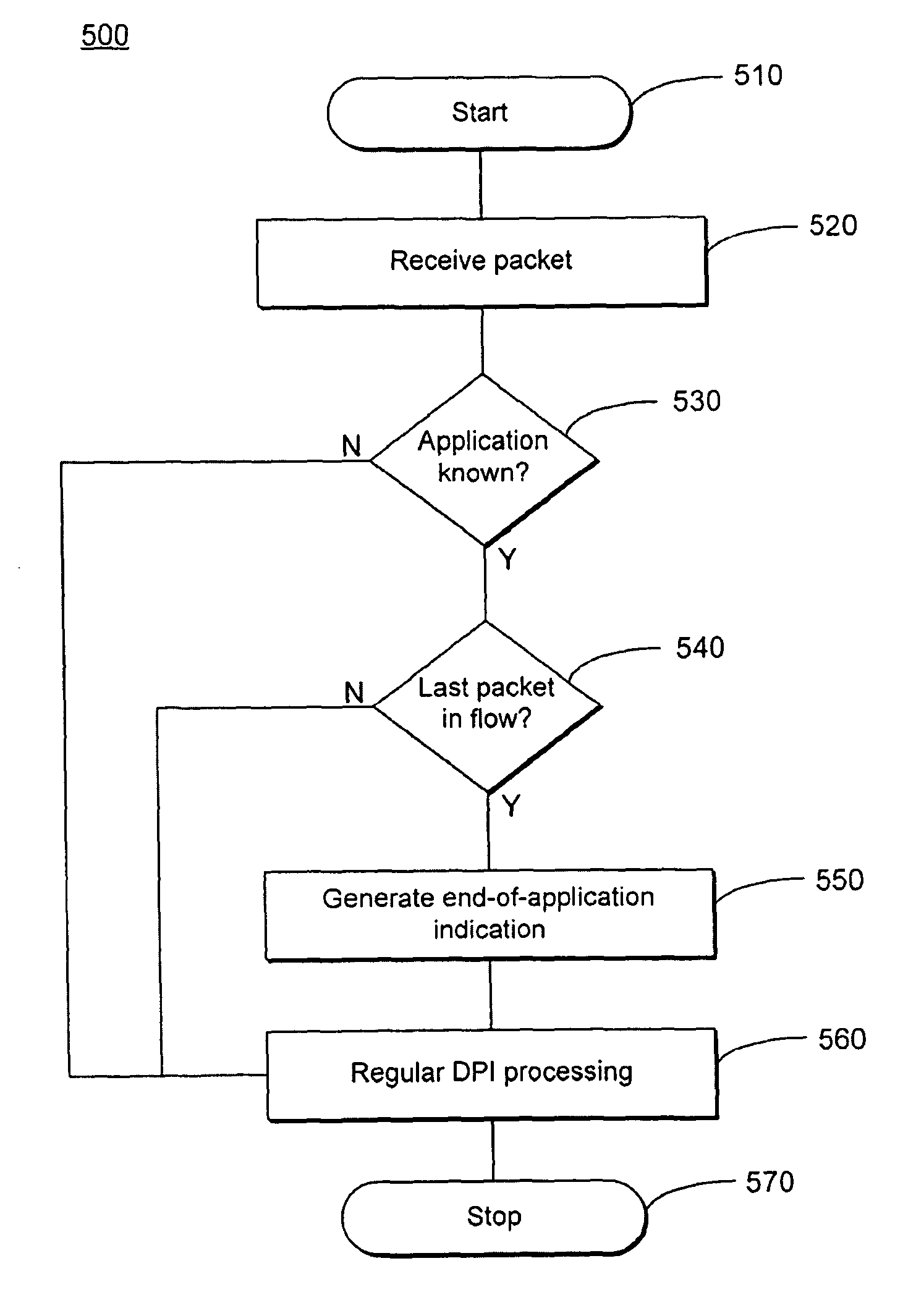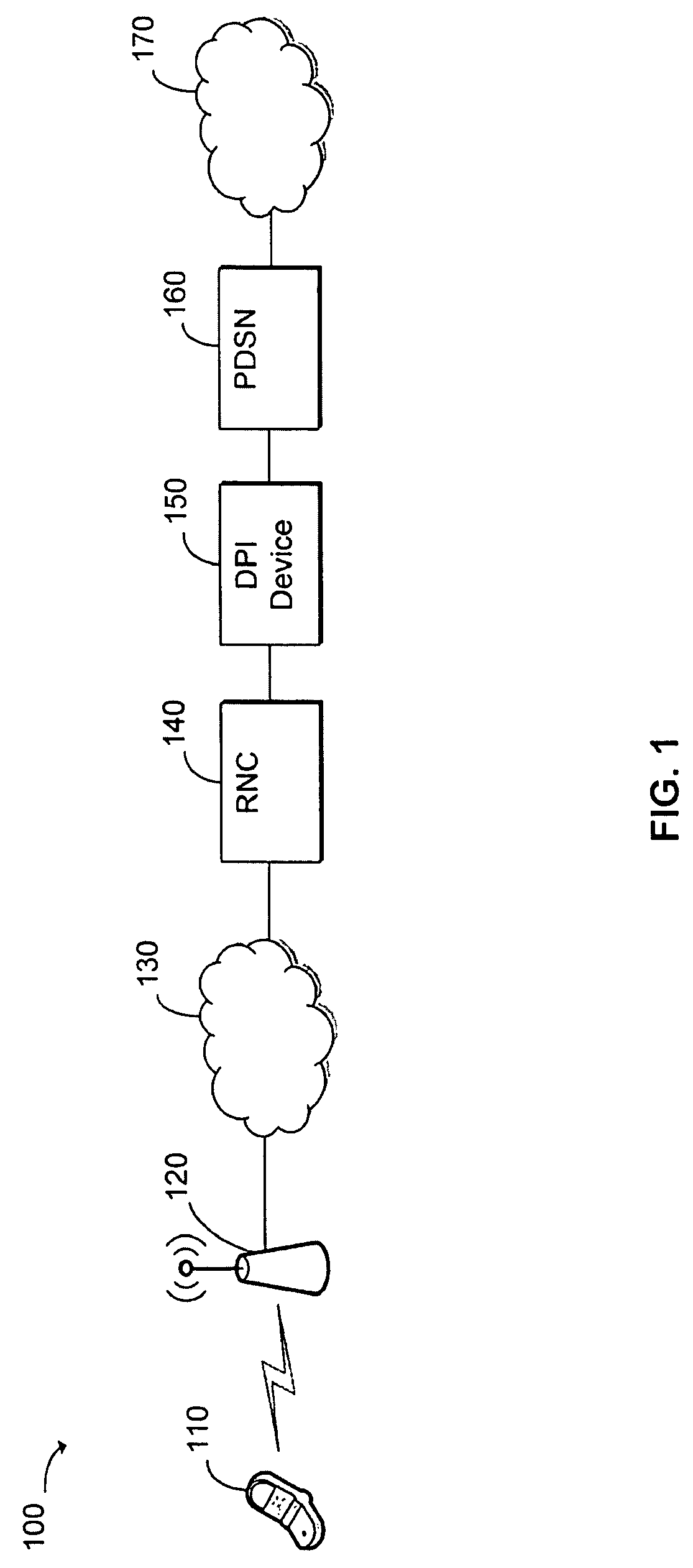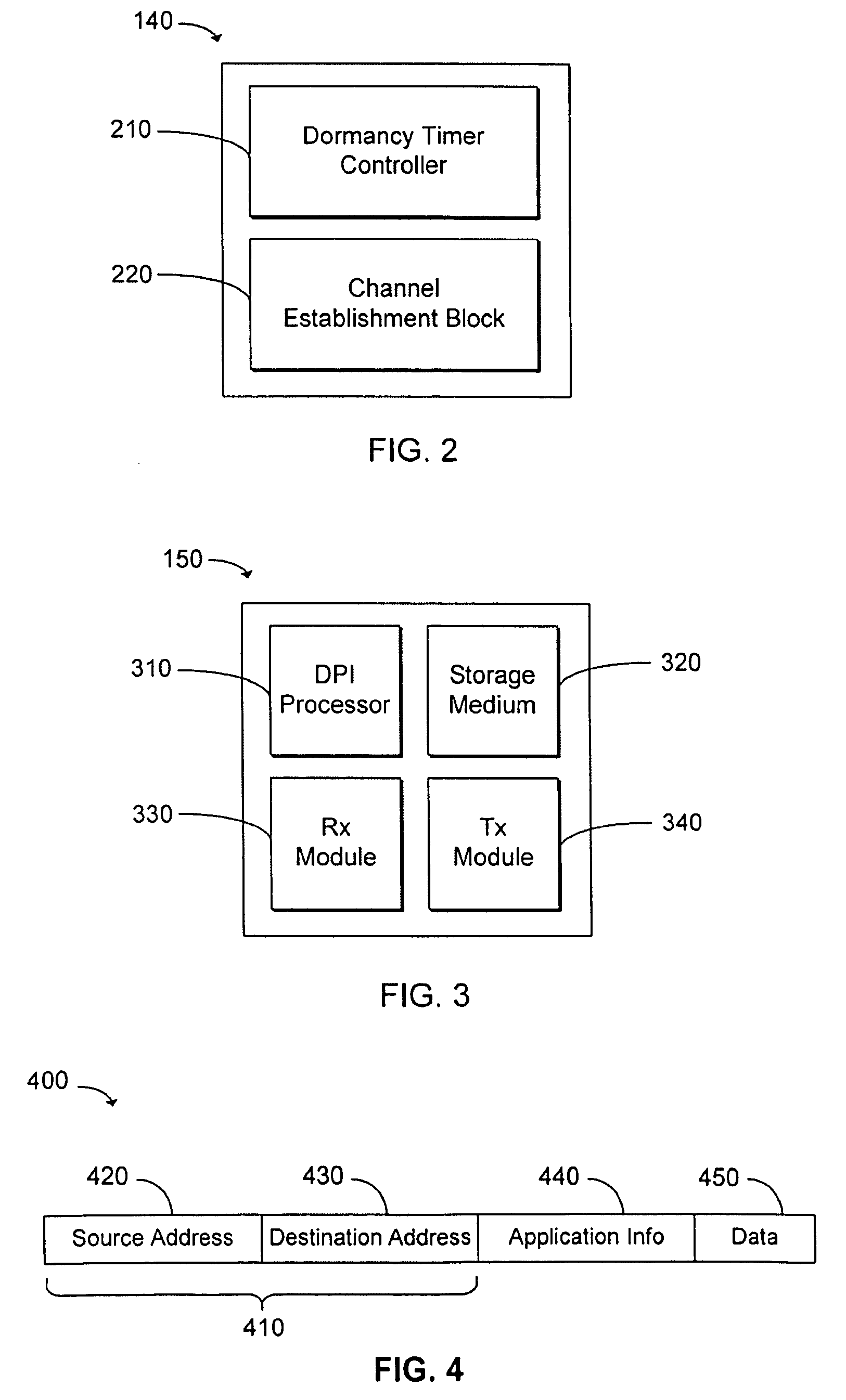DPI-driven bearer termination for short-lived applications
a bearer termination and short-lived technology, applied in the direction of connection management, wireless commuication services, electrical equipment, etc., can solve the problems of network bear additional costs, service providers are forced to compromise some applications' service, and the burden placed on the underlying network infrastructure has also increased, so as to achieve the effect of freeing up resources
- Summary
- Abstract
- Description
- Claims
- Application Information
AI Technical Summary
Benefits of technology
Problems solved by technology
Method used
Image
Examples
Embodiment Construction
[0025]Referring now to the drawings, in which like numerals refer to like components or steps, there are disclosed broad aspects of various exemplary embodiments.
[0026]FIG. 1 is a schematic diagram of an exemplary mobile network 100 utilizing in-line DPI to implement bearer termination for short-lived applications. Exemplary mobile network 100 includes user node 110, wireless base station 120, network 130, radio network controller 140, DPI device 150, packet data serving node 160, and network 170.
[0027]In various exemplary embodiments, user node 110 is a device operated by a user that enables access to mobile network 100. More specifically, in various exemplary embodiments, user node 110 is a cell phone, personal digital assistant, personal or laptop computer, wireless email device, or any other device that supports wireless communications. User node 110 may generate and send data packets related to one or more applications or may receive data packets from another wireless or wireli...
PUM
 Login to View More
Login to View More Abstract
Description
Claims
Application Information
 Login to View More
Login to View More - R&D
- Intellectual Property
- Life Sciences
- Materials
- Tech Scout
- Unparalleled Data Quality
- Higher Quality Content
- 60% Fewer Hallucinations
Browse by: Latest US Patents, China's latest patents, Technical Efficacy Thesaurus, Application Domain, Technology Topic, Popular Technical Reports.
© 2025 PatSnap. All rights reserved.Legal|Privacy policy|Modern Slavery Act Transparency Statement|Sitemap|About US| Contact US: help@patsnap.com



